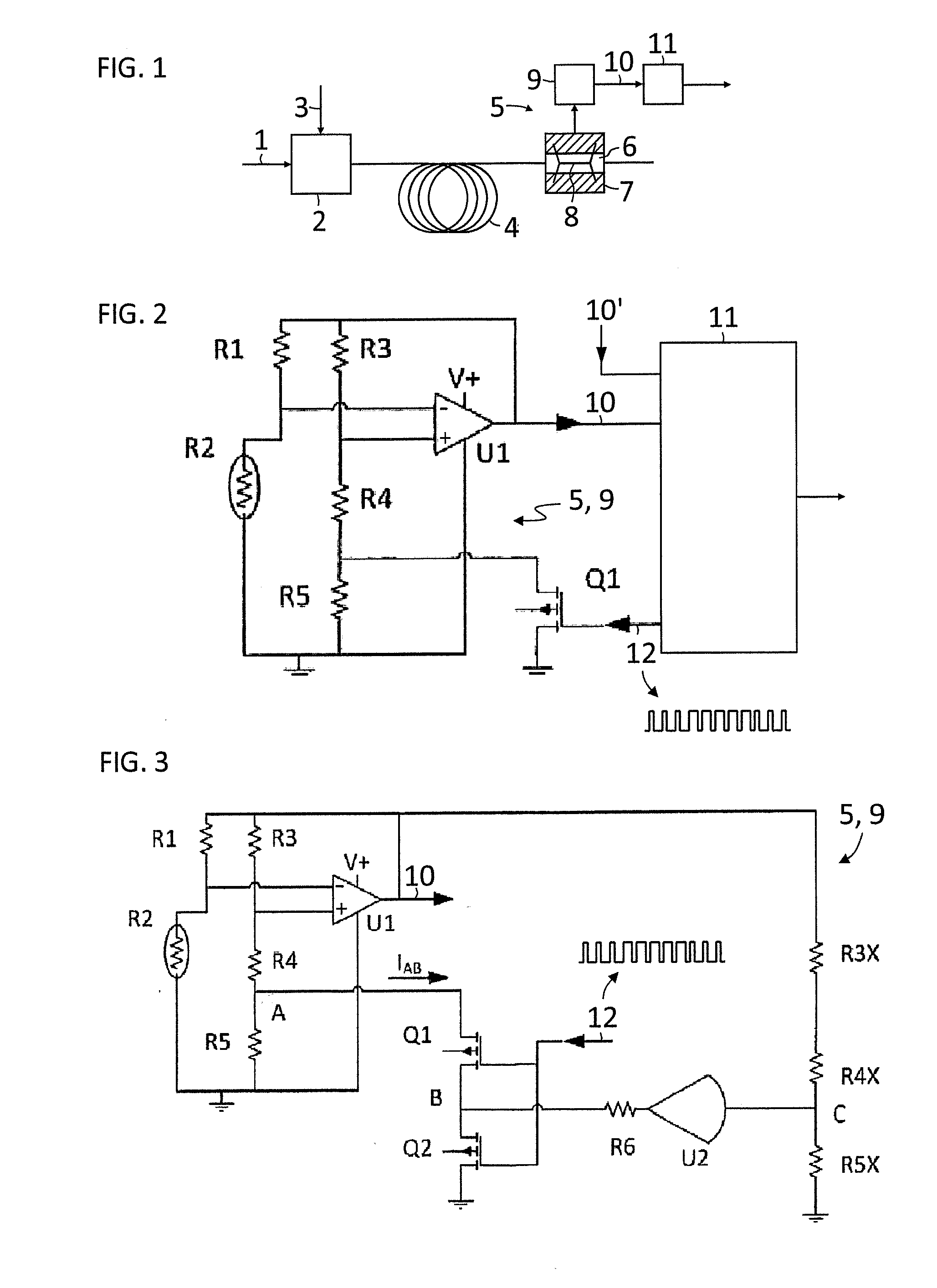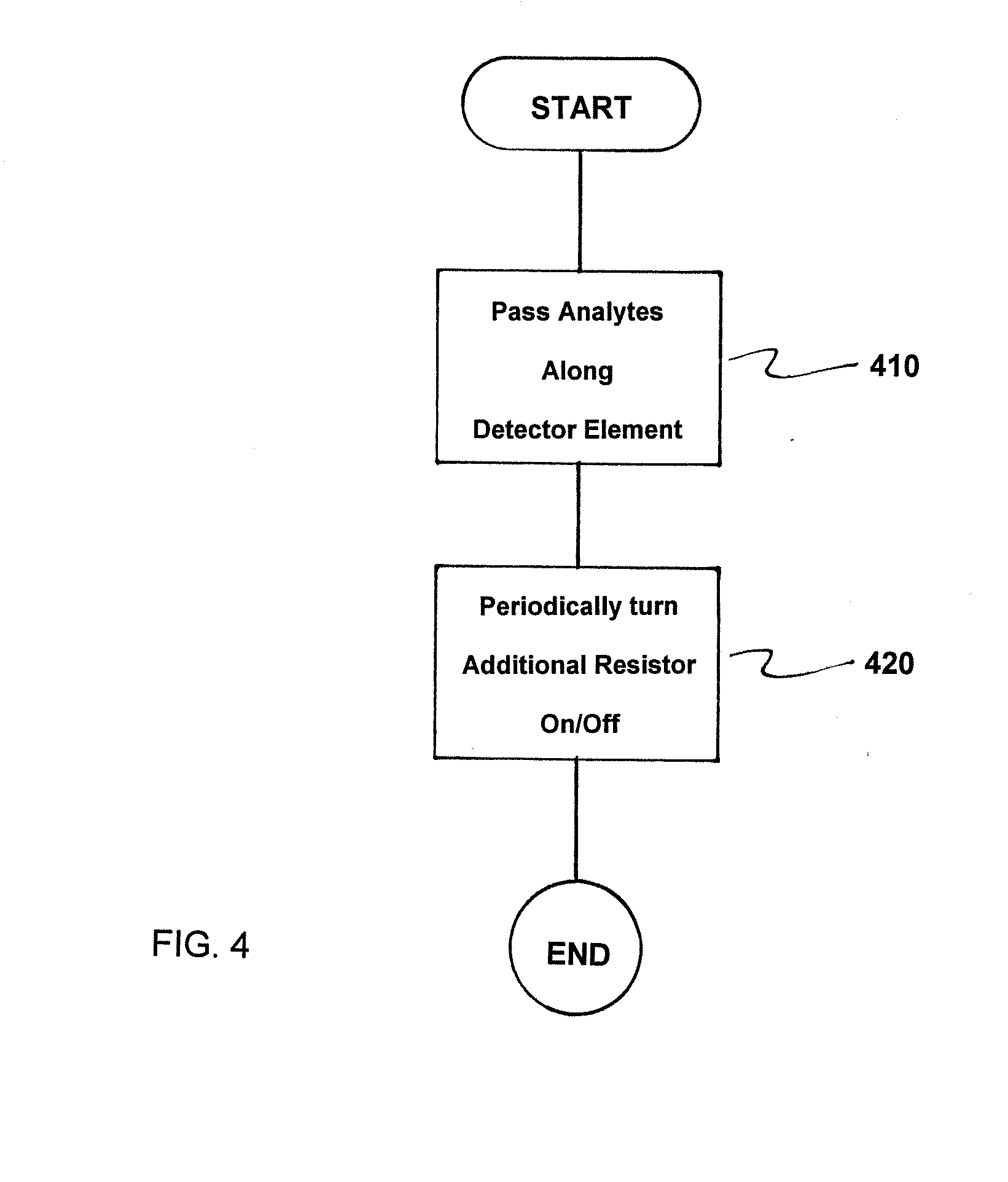Method and thermal conductivity detector
a technology of thermal conductivity and detector, which is applied in the direction of material thermal conductivity, instruments, measurement devices, etc., can solve the problems of inability to accurately compensate the operating temperature of the heating filament due to manufacturing variations of the resistance, undesirable effort to insert a variable resistor (potentiometer) or a compensating resistance, and inability to achieve the effect of micro-machined devices including the measurement channel, facilitating thermal conductivity measurement, and reducing the number of insertions
- Summary
- Abstract
- Description
- Claims
- Application Information
AI Technical Summary
Benefits of technology
Problems solved by technology
Method used
Image
Examples
Embodiment Construction
[0028]FIG. 1 illustrates a gas chromatograph in which a carrier gas 1 is delivered to an injector 2, loaded there with a sample of a gas mixture 3 to be analyzed and subsequently introduced into a separation device 4 such as a single separation column or a complete system of separation columns. The separated components or substances of the gas mixture emerging successively from the separation device 4 travel to a thermal conductivity detector 5. There, the separated gas components are conveyed in a measurement channel 6 of a measuring cell 7 past a detector element 8, such as an electrically heated heating filament. Depending on the thermal conductivity of the gas components respectively flowing past in comparison with that of the carrier gas, more or less heat is transferred from the heating filament 8 to the channel wall such that the heating filament 8 is correspondingly cooled or heated. As a result, the electrical resistance of the heating filament 8 changes, where this change ...
PUM
 Login to View More
Login to View More Abstract
Description
Claims
Application Information
 Login to View More
Login to View More - R&D
- Intellectual Property
- Life Sciences
- Materials
- Tech Scout
- Unparalleled Data Quality
- Higher Quality Content
- 60% Fewer Hallucinations
Browse by: Latest US Patents, China's latest patents, Technical Efficacy Thesaurus, Application Domain, Technology Topic, Popular Technical Reports.
© 2025 PatSnap. All rights reserved.Legal|Privacy policy|Modern Slavery Act Transparency Statement|Sitemap|About US| Contact US: help@patsnap.com



